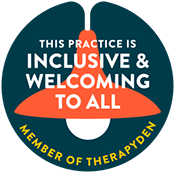Behavioral Therapy
Therapy for behavioral concerns works off of the premise that behaviors are learned and that behaviors can be changed. In behavioral therapy, you will work with a behavioral therapist at Anchor Therapy to identify and alter self-destructive or unhealthy behaviors. The focus of behavioral therapy is largely based on the present moment. In other words, you will work on current issues and how to change them.
Behavioral therapy can benefit people with the following mental health disorders:
Anxiety (Take our Anxiety Quiz by viewing our blog “Do I Have Anxiety? Take The Quiz and Learn 5 Instant Calming Tips”)
Depression (Take our Depression Quiz)
Phobias
In therapy for behavioral issues, here are some common behavioral changes clients work on:
Improving social skills:
Some people work to enhance their communication, listening skills, and empathy to build healthier and happier relationships
Anger management:
Learning to manage and express anger in a healthy way may be a goal for some
Impulse control:
People may work on delaying gratification and thinking through the consequences of their behavior before acting impulsively
Lessening aggressive or violent behavior:
A behavioral counselor will help their client pinpoint the underlying causes of aggression, such as anxiety, and replace it with a problem-solving approach
Dealing with anxiety and avoidance:
The goal here is to decrease avoidant behaviors by addressing the underlying anxiety and gradually facing those anxiety-provoking situations (This is commonly done through Exposure and Response Prevention (ERP) Therapy)
Breaking addictive or compulsive behaviors:
Clients can work on overcoming unhealthy habits (e.g., substance abuse, internet addiction, gambling, and so on) by pinpointing triggers, crafting healthy coping strategies, and constructing better habits
Enhancing time management and organization:
From developing routines to setting priorities, there are effective ways to address procrastination or disorganization
Managing depression-related behaviors:
Setting small, achievable goals and building a healthy daily routine can assist with behaviors related to withdrawal or lack of motivation
Improving self-esteem and self-image:
Behavioral counseling can help one reduce negative self-talk and self-sabotaging behaviors by boosting self-esteem and building self-compassion
Developing emotional regulation:
Behavioral therapy can teach you how to recognize and manage emotions instead of feeling overwhelmed and/or running away from them
Developing healthier coping skills:
A goal of behavioral counseling is to replace negative coping strategies (e.g., overeating, substance abuse, etc.) with healthier coping mechanisms, such as journaling, moving your body, and practicing mindfulness
Overcoming perfectionism:
A client may work to rid themselves of unrealistic standards and accept that mistakes are a natural part of life
Enhancing conflict resolution skills:
By using problem-solving skills and being open to compromise, one can learn how to handle disagreements without escalation
Working on personal responsibility and accountability:
You will develop a sense of responsibility for your actions and understand that your actions can lead to personal growth and maturity
As with any other form of therapy, behavioral counseling can be individualized, and any behavioral counselor will work closely with you to identify specific behaviors and design therapeutic interventions tailored towards your unique needs and goals. Techniques may include Cognitive Behavioral Therapy (CBT) and other therapeutic approaches.
Here are some specific behaviors that people often work to change or manage in cognitive therapy:
Nail biting (onychophagia)
Skin picking (dermatillomania)
Hair pulling (trichotillomania)
Procrastination
Emotional eating
Compulsive shopping
Compulsive lying
Excessive screen time (e.g., internet, video game, social media addiction)
Compulsive exercising
Substance use
Perfectionism
Gambling addiction
Compulsive cleaning and/or organizing
People-pleasing behavior
Hoarding behavior
Negative thought rumination
Chronic avoidance (e.g., avoiding difficult or anxiety-provoking situations, tasks, or emotions)
Over-apologizing
And much more!
What are the three pillars in behavioral therapy?
As the name suggests, therapy for behavioral issues focuses on identifying and changing problematic behaviors by addressing underlying patterns and triggers that are driving them. Behavioral therapy largely moves from the framework of behaviorism where the thought is that behavioral patterns are learned through interactions with your environment and, therefore, they can be unlearned or replaced with a healthier alternative.
Unlike some forms of therapy that dive deeply into your past experiences or unconscious motivations, such as Psychodynamic Therapy, behavioral therapy is a more present-focused, action-oriented type of counseling.
The goal of behavioral counseling is to help you learn more adaptive behaviors by understanding the connection between your actions and the consequences they create. Behavioral therapy will empower you to take control over your behaviors, even when you are struggling with anxiety, depression, addiction, or unhealthy lifestyle habits. When you make behavioral changes, your emotional well-being, the relationships in your life, and your overall welfare will increase!
With that being said, the primary three pillars of behavioral therapy include the following:
Functional analysis
Functional analysis, the first pillar of behavioral counseling, involves pinpointing and comprehending your triggers and the consequences that maintain your problematic behavior. More specifically, this analysis looks at the context in which the behavior occurs. This allows your behavioral counselor to notice the emotional, cognitive, and environmental factors that are motivating your behavior.
For example, do you experience social anxiety before social events which leads you to avoid these events altogether? In this case, a behavioral therapist would do a functional analysis which would reveal that avoidance is a reinforcing consequence that temporarily alleviates your anxiety, but does not lead to long-lasting anxiety relief. This will help map out the cycle you are in which is sustaining the avoidance.
2. Behavioral techniques
Behavioral techniques are at the forefront of behavioral therapy as they include a wide range of interventions aimed at directly altering your problematic behaviors.
Some behavioral techniques used may include:
Systematic desensitization
Role-playing
These types of tactics will encourage you to face your fears in a gradual or controlled manner.
For instance, if you come to behavioral therapy for a phobia-related concern, your mental health therapist may want you to engage in ERP Therapy where you are slowly introduced to a feared object or situation in a safe environment which will eventually lead to a decrease in anxiety over time.
These behavioral techniques can also be used in cases of impulse control or substance abuse where the goal is to remold responses and habits.
3. Reinforcement
Reinforcement, the third and final pillar of behavioral therapy, uses positive and negative reinforcement to encourage desirable behaviors while lessening the problematic behavior you are struggling to halt.
Positive reinforcement refers to rewarding a behavior to increase its occurrence. For example, if your child completes their homework for school, you can give them positive words of affirmation for doing so.
On the other hand, negative reinforcement involves removing a stimulus to encourage the desired behavior. For example, your anxiety is reduced when you do a breathwork exercise.
By engaging in reinforcement techniques, long-term change can ensue because you are creating positive associations with healthier behavior patterns.
Together, these three pillars of functional analysis, behavioral techniques, and reinforcement have specific purposes that lead to overall lifestyle changes. You can understand the behavior through functional analysis, apply targeted behavioral techniques, and, lastly, reinforce the desired changes.
These three pillars lead to meaningful and lasting behavioral transformations. These three tactics are central to therapies like CBT which can be used to address a wide range of mental health concerns.
Who needs behavioral therapy?
Behavioral therapy can help people of all ages, from children and teens to adults and senior citizens, with a wide range of emotional, psychological, and behavioral concerns. If specific behaviors are negatively impacting your daily life, relationships, or mental health, it is advised to seek the help of a behavioral counselor near you.
Behavioral therapy is such a popular therapeutic modality because there is a lot of evidence behind it to show success. Studies have reported that 75% of people who undergo behavioral counseling experience some sort of benefit from the treatment.
The following are populations of people who may benefit from behavioral therapy:
Individuals with depression:
Behavioral activation can help those with depression re-engage in meaningful activities to boost your mood and fight off feelings of hopelessness.
People with anxiety or panic disorders:
Behavioral therapy techniques, such as ERP therapy and cognitive restructuring, can help those who struggle with excessive worry, panic attacks, or avoidance behaviors.
Children and adults with ADHD:
Those with ADHD can work on time management, organizational skills, and impulse control in behavioral therapy.
Individuals with OCD:
ERP therapy for OCD may be used to reduce compulsive behaviors by gradually exposing you to anxiety-inducing situations without performing a usual ritual.
People struggling with addiction:
Behavioral therapy can help people struggling with addiction by identifying triggers, managing cravings, and replacing addictive behaviors with healthier alternatives.
People with phobias:
Individuals with specific phobias (e.g., fear of heights, fear of flying, fear of spiders, etc.) can benefit from exposure therapy where they are gradually and safely exposed to their fear until the fear response diminishes
Children with behavioral issues:
Behavioral therapy is very common for children with disruptive behaviors as it can teach them coping skills, emotional regulation, and problem-solving techniques.
Individuals with anger management concerns:
The focus on this form of anger management therapy is to teach strategies for recognizing anger triggers, managing emotions, and responding in a more calm manner.
People with sleep disorders:
By teaching techniques to improve sleep habits and manage sleep-related anxieties, behavioral therapy can help with a range of sleep issues, including insomnia.
People struggling with relationship or social challenges:
Difficulty maintaining healthy relationships, social anxiety, and people-pleasing behaviors are all examples of things that can be worked on in behavioral therapy through assertiveness training, building and maintaining emotional boundaries, and enhancing your communication skills.
Generally, therapy for behavioral issues is suitable for anyone who wants to work on changing specific behaviors that interfere with your ability to live a fulfilling, healthy life. Whether your behavioral concerns are rooted in mental health conditions, bad habits, or daily stressors, behavioral therapy can offer a goal-oriented approach so you can make positive, long-lasting changes in your life.
What is an example of behavioral therapy?
As mentioned previously, behavioral therapy can be used for a wide range of mental health disorders. An example of behavioral therapy can be ERP therapy for treating phobias or anxiety disorders. The primary purpose of exposure therapy is to help someone gradually confront their fears or anxieties so, eventually, their fear response diminishes. That is to say, their feared object, situation, or place will lose its power over them.
Let us take someone who has a fear of flying, also known as aviophobia. They may avoid airports, airplanes, or even films or online content with airplanes in it. This greatly limits their ability to travel and live life to the fullest extent.
In exposure therapy for a fear of flying, an exposure therapist at Anchor Therapy will work to ensure that their client slowly and systemically faces their fear in a controlled manner. The process is all about gradual exposure to the feared stimulus, or airplane in this case. The process starts with less anxiety-provoking situations and gradually the intensity will increase.
The steps of exposure therapy for fear of flying would look something like the following:
Imaginal exposure:
This can simply begin by the client visualizing sitting in the airport or boarding an airplane. The ERP therapist will guide the client throughout this process, helping them manage their anxieties as soon as they arise.
Exposure to plane-related media:
This may start by having the client view images of airplanes to having them watch videos of airplanes taking off and landing to further reduce anxiety by additional exposure.
Visit to the airport:
As the client naturally becomes more comfortable with airplanes, they may take a trip to the airport without boarding a plane. They are simply visiting the airport just to experience the setting. Through specific coping tactics, such as deep breathing and mindfulness, a behavioral therapist will assist the client in managing their fear.
Boarding a plane and flying:
After building tolerance, a client can take a short flight with the support of their exposure counselor. As the client boards the plane and sits in their assigned seat, they can continue to practice the relaxation tactics they know that work for them. The goal is to have the client repeatedly face their fear in a gradual, safe manner so the fear response lessens.
By continuing to fly and expose themselves to airplanes, this client will become desensitized to the anxiety they felt around flying. This will significantly reduce or eliminate their phobia. This sort of step-by-step approach that is outlined above is key to many forms of behavioral therapy as it is a structured form of mental health counseling.
In conclusion, behavioral therapy offers a practical, goal-oriented approach to overcoming many emotional and psychological obstacles. This form of psychotherapy offers a structured, evidence-based approach to personal growth.
How Can I Start behavioral counseling at Anchor Therapy?
WORKING WITH anchor therapy IS EASY
Submit a contact form.
Our intake coordinator will respond via email and match you with a behavioral counselor on our team who suits your needs.
Your journey to achieving your goals starts here!


















